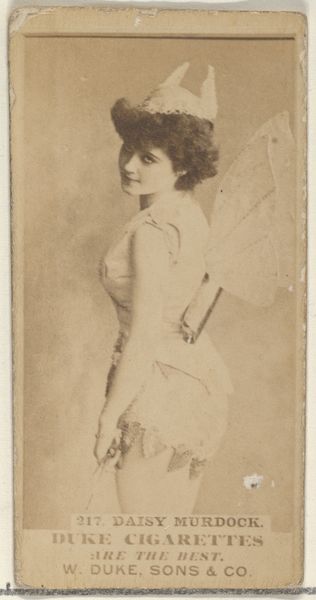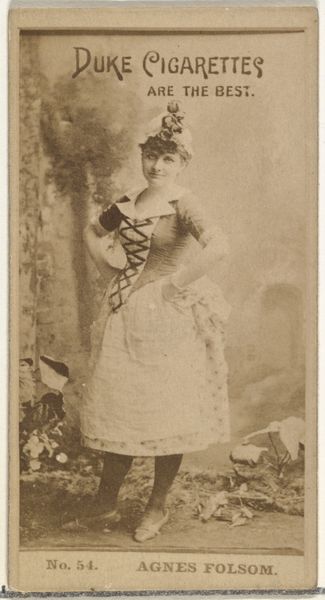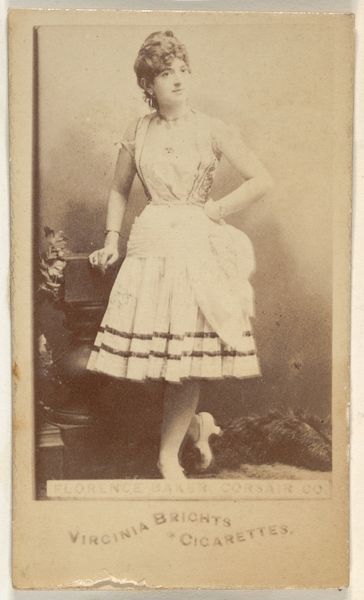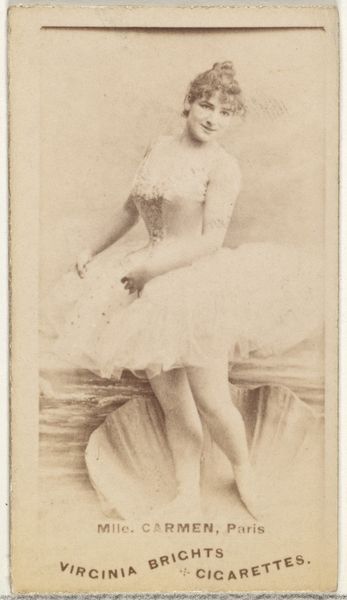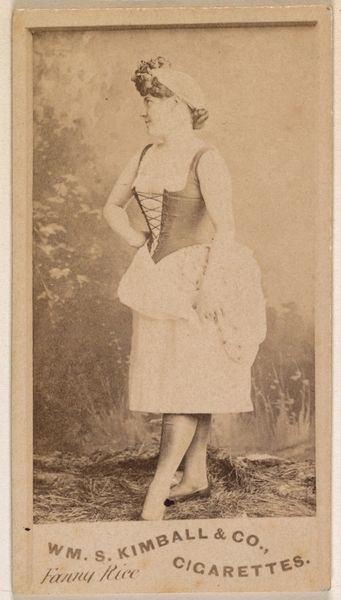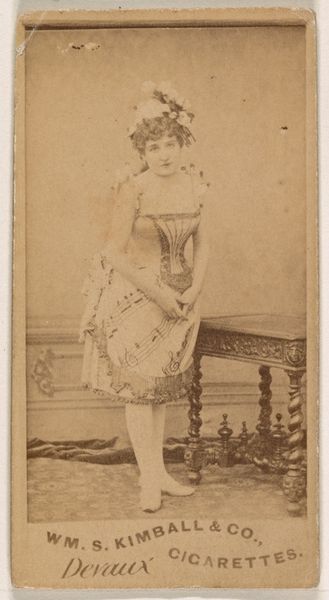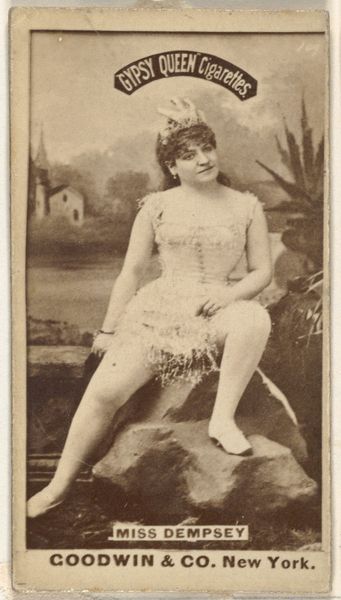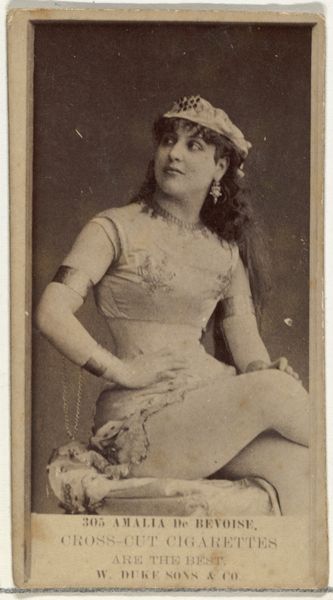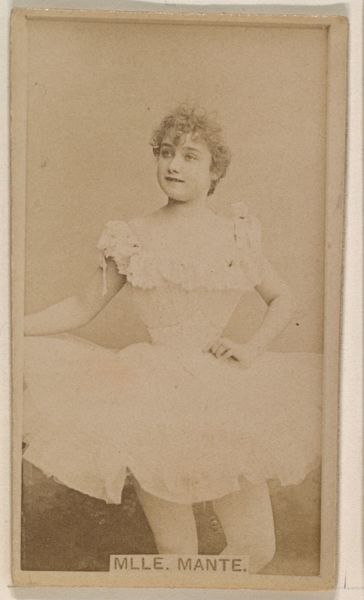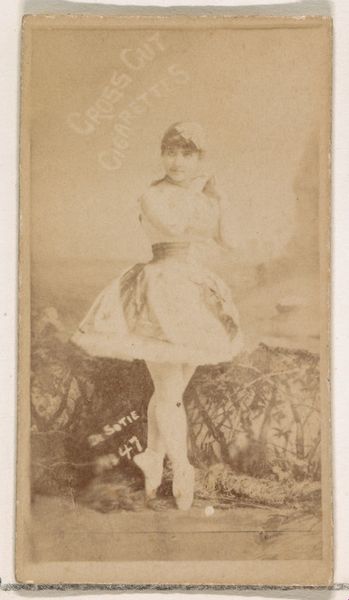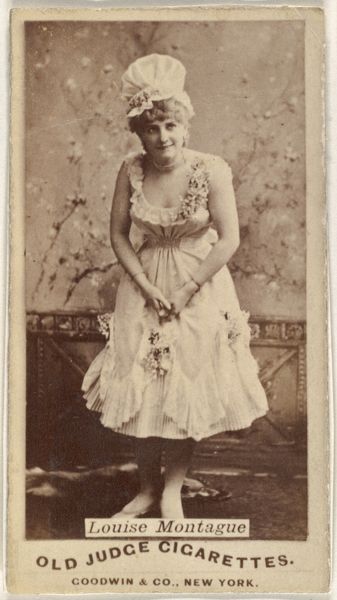
Lillian Harvey, from the Actresses series (N203) issued by Wm. S. Kimball & Co. 1889
0:00
0:00
print, photography
#
portrait
# print
#
photography
#
pencil drawing
Dimensions: Sheet: 2 5/8 × 1 3/8 in. (6.6 × 3.5 cm)
Copyright: Public Domain
Editor: This is a trade card from 1889, made by the Wm. S. Kimball & Co. as part of the "Actresses" series, featuring Lillian Harvey. It’s a photograph, reproduced as a print, likely for cigarette packaging. What strikes me is its simplicity – almost like a hand-tinted drawing, a common marketing material back then. How do you read this piece? Curator: Looking at this from a materialist perspective, I'm immediately drawn to the means of production and its purpose. This wasn’t fine art, but mass-produced imagery. It's a photograph, reproduced to promote cigarettes. Consider the consumption it encouraged - the disposable nature of the card contrasts starkly with the "high art" of portraiture it mimics. How does the mass production of these cards influence artistic perception and value? Editor: I guess it blurs the line between art and advertising, doesn't it? It makes you think about how consumer culture impacts what's considered valuable. Curator: Exactly. The seemingly innocent portrait is part of a complex web of tobacco farming, manufacturing, and distribution. The actress's image becomes a commodity itself. And look at the materials used – paper, ink, photographic chemicals. These everyday materials carry immense economic and social weight. Do you think the artistic intention matters here as much as the production and its consequences? Editor: Probably not as much, because its primary function was to be traded, used and discarded. Not really admired or cherished in the traditional sense. This also seems to speak to an earlier, different time for copyright in commercial enterprise. It almost feels like these companies got away with what would today be licensing nightmares! Curator: Precisely! This "artwork" allows us to see beyond the surface image and explore the industrial, social, and cultural forces that shaped its existence. It’s about deconstructing the art object. Editor: I see. Thanks! Looking at it this way highlights how much of art history has to do with labor and the rise of mass-produced images.
Comments
No comments
Be the first to comment and join the conversation on the ultimate creative platform.
